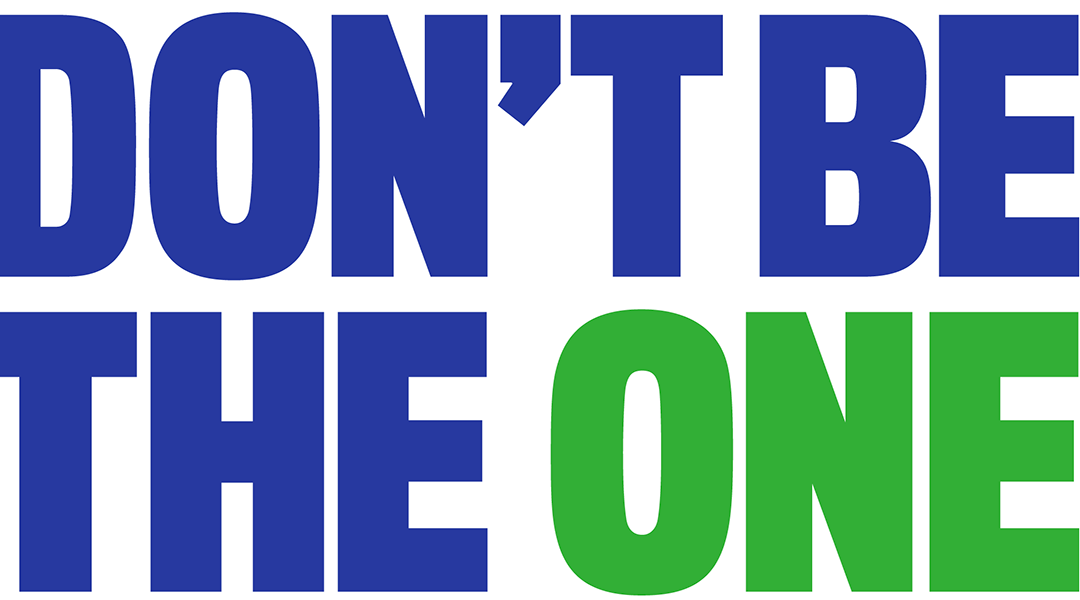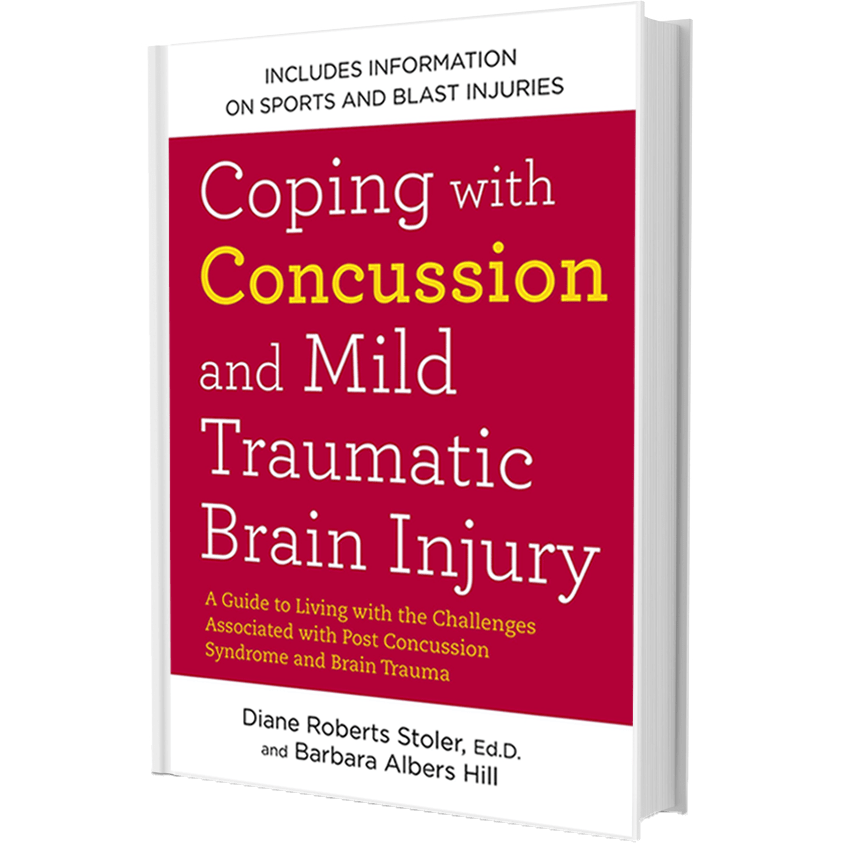There are approximately 80 million stroke survivors worldwide– including myself. Over 50 million of them live with some form of permanent disability as a result. For many, life after stroke won’t be quite the same; but, with the right care and support living a meaningful life is still possible. I am living proof.
Observed on October 29th, World Stroke Day brings global attention to the urgent need for us all to take action on stroke prevention. One in four people is at risk of stroke in our lifetime, but most strokes can be prevented by taking a few simple steps. #DontBeTheOne
A stroke can happen to anyone, at anytime and anywhere. Today stroke is the leading cause of disability worldwide and the second leading cause of death, but almost all strokes could be prevented. Up to 90% of strokes could be prevented by addressing a small number of risk factors. These risk factors include diet, exercise, hypertension and diet. Preventive action on stroke would also contribute to a massive scale reduction in stroke and would contribute to global goals to reduce cardiovascular disease, cancer, diabetes and other significant causes of death and suffering worldwide.
What is a Stroke?
A Stroke or “Brain Attack” is a form of cerebrovascular disease that affects the blood supply to the brain. It interrupts the flow of blood to the brain and can occur from one of two ways:
- A Blood Clot blocks a blood vessel or artery. It is called Ischemic stroke.
- A Blood vessel or artery breaks. This is called a Hemorrhagic (heh-more-raj-ik) stroke. The most common causes are high blood pressure and brain aneurysm. An aneurysm is a weakness or thinness in the blood vessel wall.
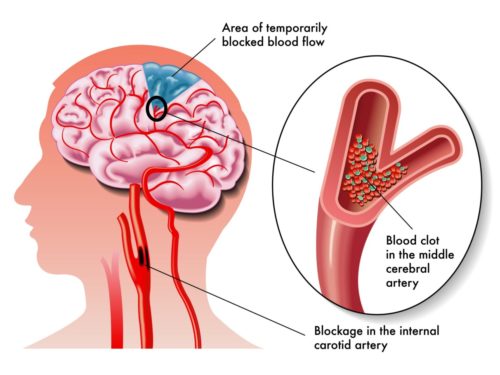
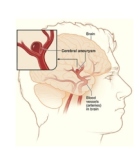
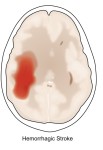
My stroke was from a cavernous hemangioma, which is a bundle of capillaries. The capillaries broke and bled in my head, while driving. This bleeding caused me to pass out while driving, resulting in a 60- mile an hour head-on automobile accident. Five months later, I had to have brain surgery to remove the cavernous hemangioma.
TIA is a transient ischemic attack. This means there is a brief reduction of the blood flow to the brain. It mimics stroke symptoms stated below and also can be confused with symptoms of a migraine headache or partial seizure. The difference is the amount of time involved. The best advice is always to contact your medical doctor if you have any of the symptoms listed below.
Symptoms of a Stroke
The most common symptoms of a stroke are:
- Weakness or numbness of the face, arm, or leg on one side of the body.
- Loss of vision or dimming (like a curtain falling) in one or both eyes.
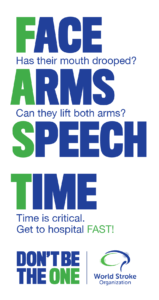
- Loss of speech, difficulty talking, or understanding what others are saying.
- Sudden, severe headache with no known causes
- Loss of balance or unstable walking, usually combined with another symptom.
REMEMBER – F.A.S.T.
F – Face | Is the face drooping on one side?
A – Arm | Is one arm weaker than the other?
S – Speech | Is the person able to speak? Are words jumbled or slurred?
T – Time | Act quickly and seek medical help!
Causes of a Stroke
A stroke is a medical emergency and can cause permanent neurological damage and death. Risk factors for stroke include old age, high blood pressure, diabetes, high cholesterol, tobacco smoking, previous stroke or transient ischemic attack (TIA), and atrial fibrillation. High blood pressure is the most important modifiable risk factor of stroke.
Life After Stroke
For most stroke survivors, caregivers and families, life will be different. Accepting and adjusting to life after stroke is fundamental to your recovery and well-being. Finding your ‘new normal’ won’t happen all at once, but by working with your healthcare team, developing new routines and tracking your goals, you can make progress.
Life after stroke can feel lonely for both survivors and for caregivers. It is important to realize you are not at all alone! Connect with others who have experienced a stroke or are caregivers; get practical advice on daily challenges. Even just reading stories of survival and recovery are all powerful actions that can provide hop, comfort and encouragement. Read my story and other testimonials.
Helpful Resources
Coping with Mild Traumatic Brain Injury
- Because a stroke is a type of brain injury, the symptoms experienced after having a stroke can be dealt with similar to those from brain injury. Coping with Mild Traumatic Brain Injury: A Guide to Living with the Challenges Associated with Concussion / Brain Injury describes the most common physical, mental and psychological symptoms of brain injury, explains why these symptoms occur and what can be done to help, and offers practical suggestions for coping with the problem. This book also covers financial, insurance and family issues; the rehabilitation process; and eventual outcomes. CWMTBI is a great resource for brain injury/stroke survivors, family members, caregivers and friends, and also anyone working in the field of concussion or brain injury/stroke.
The Post Stroke Checklist (PSC): Improving Life After Stroke
- The Post Stroke Checklist (PSC) is a tool that aims to of improve long-term stroke care. The Checklist is a simple, easy to use checklist that helps survivors and health care professionals identify changes and problems so that where possible these can be effectively treated.
Stroke Support Groups
- Whether you are a stroke survivor or caregiver, support groups can provide a forum for learning, listening and socializing with others. Learn more, find a support group, or start one in your area.
Consult with Dr. Diane®
- Dr. Diane Brain Health utilizes state of the art and cutting edge technology and has the Solutions and Resources℠ to get you feeling your best. The Dr. Diane integrative team of brain health experts are trained in conventional, complementary and alternative specialties. This team using her 5 Prong Approach, will provide you a customized treatment program, because Dr. Diane see each person as a unique individual and no that one method does not fit everyone.
To schedule an appointment for an in-person, phone or Zoom consult with Dr. Diane®, please call us at (800) 500-9971 or submit a contact form.
SEE STROKE TREATMENTS
